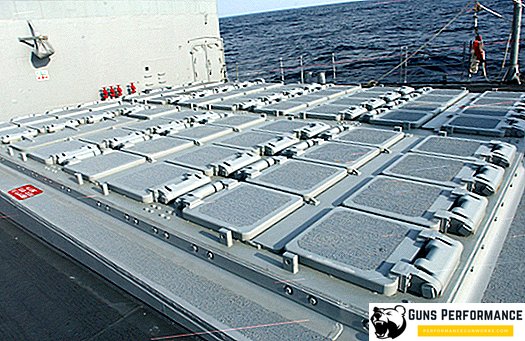The history of our planet is rich in bright and unusual phenomena, which still have no scientific explanation. The level of knowledge of the world of modern science is high, but in some cases people are not able to explain the true nature of events. Ignorance creates mystery, and mystery is cluttered with theories and assumptions. The mystery of the Tunguska meteorite is a clear confirmation of this.

Facts and analysis of the phenomenon
The disaster, which is considered one of the most mysterious and unexplained phenomena in modern history, occurred June 30, 1908. In the sky over the deaf and deserted areas of the Siberian taiga a cosmic body of enormous size swept. The end of his rapid flight was the strongest air explosion that occurred in the basin of the Podkamennaya Tunguska River. Despite the fact that the celestial body exploded at an altitude of about 10 km, the consequences of the explosion were enormous. According to modern scientists, its strength varied in the range of 10-50 megatons of TNT equivalent. For comparison: the atomic bomb dropped on Hiroshima had a power of 13-18 Kt. After the catastrophe in the Siberian taiga, soil oscillations were recorded in almost all observatories of the planet from Alaska to Melbourne, and the shock wave circled the globe four times. Electromagnetic perturbations caused by the explosion, for several hours knocked out radio communication.

In the first minutes after the catastrophe, unusual atmospheric phenomena were observed in the sky over the entire planet. The inhabitants of Athens and Madrid saw the auroras for the first time, and in the southern latitudes of the night during the week after the fall were bright.
Scientists around the world have hypothesized what really happened. It was believed that such a large-scale disaster that shook the entire planet was the result of the fall of a large meteorite. The mass of the celestial body with which the Earth collided could be tens, hundreds of tons.
The Podkamennaya Tunguska River - an approximate place where a meteorite fell, gave the name to the phenomenon. The remoteness of these places from civilization and the low technical level of scientific technology did not allow to accurately determine the coordinates of the fall of a celestial body and determine the true scale of the disaster without a hitch.

Already a little later, when some details of the incident became known, eyewitness testimonies and photos from the crash site appeared, scientists began to lean more often to the point of view that the Earth was colliding with an object of unknown nature. The idea was admitted that it might have been a comet. Modern versions put forward by researchers and enthusiasts are more creative. Some consider the Tunguska meteorite to be a consequence of the fall of a spacecraft of extraterrestrial origin, others speak of the terrestrial origin of the Tunguska phenomenon, caused by the explosion of a powerful nuclear bomb.
Nevertheless, a valid and generally accepted conclusion about what happened does not exist, despite the fact that today there are all the necessary technical means for a detailed study of the phenomenon. The mystery of the Tunguska meteorite is comparable in its attractiveness and the number of assumptions with the mystery of the Bermuda Triangle.
Basic versions of the scientific community
No wonder they say: the first impression is the most correct. In this context, it can be said that the first version of the meteoric nature of the catastrophe that occurred in 1908 is the most reliable and plausible.
Today, any schoolchild can find the place of the fall of the Tunguska meteorite on the map, and 100 years ago it was quite difficult to determine the exact location of the cataclysm that shook the Siberian taiga. It took as many as 13 years before the scientists paid close attention to the Tunguska catastrophe. The credit for this belongs to the Russian geophysicist Leonid Kulik, who in the early 1920s organized the first expeditions to Eastern Siberia with the aim of shedding light on the mysterious events.

The scientist managed to collect a sufficient amount of information about the catastrophe, stubbornly adhering to the version of the cosmic origin of the explosion of the Tungussky meteorite. The first Soviet expeditions under the leadership of Kulik gave a more accurate idea of what actually happened in the Siberian taiga in the summer of 1908.
The scientist was convinced of the meteoric nature of the object that shook the Earth, so he stubbornly sought the crater of the Tunguska meteorite. It was Leonid Alekseevich Kulik who first saw the place of the disaster and took photos of the place of the fall. However, the scientist's attempts to find fragments or fragments of the Tunguska meteorite were not crowned with success. There was no funnel, which inevitably had to remain on the surface of the earth after a collision with a space object of such size. A detailed study of this area and the calculations carried out by Kulik gave reason to believe that the destruction of the meteorite occurred at a height and was accompanied by an explosion of great force.

At the site of the fall or explosion of the object, soil samples and wood fragments were taken, which were thoroughly studied. In the proposed area on a huge area (more than 2 thousand hectares) the forest was tumbled down. And the trunks of trees lay in the radial direction, the tops of the center of the imaginary circle. However, the most curious is the fact that in the center of the circle the trees remained unharmed. This information gave reason to believe that the Earth collided with a comet. At the same time, the comet collapsed as a result of the explosion, and most of the fragments of the celestial body evaporated in the atmosphere, not reaching the surface. Other researchers have suggested that the Earth probably collided with a spacecraft of an extraterrestrial civilization.

Versions of the Tungus Phenomenon of Origin

In all respects and descriptions of eyewitnesses, the version of the meteorite body was not entirely successful. The fall occurred at an angle of 50 degrees to the surface of the Earth, which is not characteristic of the flight of cosmic objects of natural origin. A large meteorite, flying along such a trajectory and at cosmic speed, in any case had to leave behind fragments. Let small, but particles of a space object in the surface layer of the earth's crust should have remained.

There are other versions of the origin of the Tunguska phenomenon. The most preferred are the following:
- collision with a comet;
- high-power air nuclear explosion;
- flight and death of the alien spacecraft;
- technological disaster.
Each of these hypotheses has a twofold component. One side is oriented and based on existing facts and evidence, the other part of the version is already contrived, it borders on fiction. However, for a number of reasons, each of the proposed versions has the right to exist.
Scientists admit that the Earth could collide with an ice comet. However, the flight of such large celestial bodies never passes unnoticed and is accompanied by bright astronomical phenomena. By that time, there were the necessary technical capabilities that would allow one to see in advance the approach to Earth of such a large-scale object.
Other scientists (mostly nuclear physicists) began to express the idea that in this case we are talking about a nuclear explosion that shook the Siberian taiga. In many ways, and witness descriptions of a series of occurring phenomena largely coincide with the description of the processes in the chain thermonuclear reaction.

However, as a result of data obtained from soil and wood samples taken in the area of the intended explosion, it turned out that the content of radioactive particles does not exceed the established norm. Moreover, by that time not a single country in the world had the technical capabilities to carry out such experiments.
Curious other versions that indicate the artificial origin of the event. These include the theory of ufologists and fans of tabloid sensations. Supporters of the version of the fall of an alien ship suggested that the consequences of the explosion indicate the man-made nature of the disaster. Ostensibly aliens flew to us from space. However, the explosion of such a force was to leave behind a part or fragments of a spacecraft. So far, nothing of the kind has been found.

No less interesting is the version of the participation in the events of Nikola Tesla. This great physicist was actively studying the possibilities of electricity, trying to find an opportunity to curb this energy for the benefit of mankind. Tesla argued that by climbing a few kilometers upwards, it is possible to transmit electrical energy over long distances using the earth's atmosphere and the force of lightning.

The scientist conducted his experiments and experiments on the transmission of electric energy over long distances precisely at the time when the Tungusska catastrophe happened. As a result of an error in calculations or under other circumstances, an explosion of plasma or ball lightning occurred in the atmosphere. Perhaps the strongest electromagnetic pulse that hit the planet after the explosion and brought down radio equipment is the consequence of the great scientist’s unsuccessful experience.
Future solution
Whatever it was, the existence of the Tunguska phenomenon is an indisputable fact. Most likely, the technical achievements of a person will eventually be able to shed light on the true causes of the disaster that happened more than 100 years ago. Perhaps we are faced with an unprecedented and unknown phenomenon in modern science.












